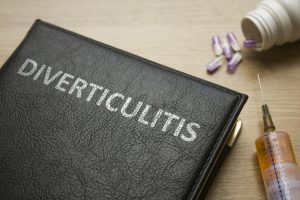 Diverticulitis can be excruciatingly painful. But adding some bulk to your diet may help tame symptoms and stop them from occurring. It’s possible that bulk may prevent diverticulitis from ever affecting you.
Diverticulitis can be excruciatingly painful. But adding some bulk to your diet may help tame symptoms and stop them from occurring. It’s possible that bulk may prevent diverticulitis from ever affecting you.
What’s bulk? The one and only fiber.
Advertisement
Diverticulitis is when little pouches that grow along your intestines – called diverticula – become infected and inflamed. It’s entirely possible that you’ve got diverticula and don’t even know it. Often, they are harmless and go completely undetected.
Other times, they can turn into diverticulitis that can result in painful flare-ups or continuous pain.
Early signs that you may have diverticula include constipation, diarrhea, bloating, thin stools, and pain in the belly. Diverticulitis would be marked by these symptoms in addition to abdominal pain.
Although there are a host of risk factors for diverticulitis, including weight and activity levels, one potential fix is adding more fiber to your diet. Fiber is an indigestible compound in plant-based foods that helps add bulk to stool, so it passes through your digestive system more easily.
If you have diverticulitis, of course, that may sound like it can make things even more painful. And it can. So, here’s the process on how to do it with as little pain as possible.
Flare-ups are often treated with a liquid diet and rest. This hopefully results in less stimulation and rubbing along the intestinal wall to limit inflamed diverticula. Once symptoms have resided, it’s time to start slowly boosting fiber.
Easing back into a high-fiber diet is the way to go. You would begin by going with easily digestible low fiber food. White bread, eggs, and even some meat are staples. Once the digestive system is re-introduced to solid foods for a couple of days, you can start increasing fiber.
Advertisement
Whole grains, fruits, and vegetables are where you’ll get it. After a few days – and even a slight bout of bloating and constipation as your body adjusts – the fiber will begin to soften and bulk up stool to help it move through you.
The result, hopefully, is a lower risk for painful flare-ups. Ultimately, you should be aiming for 25-35 grams of fiber per day.
You are very lucky if you’ve never experienced the pain of diverticulitis. To keep it that way, including more fiber in your diet, getting more exercise, and limiting processed foods may help.
